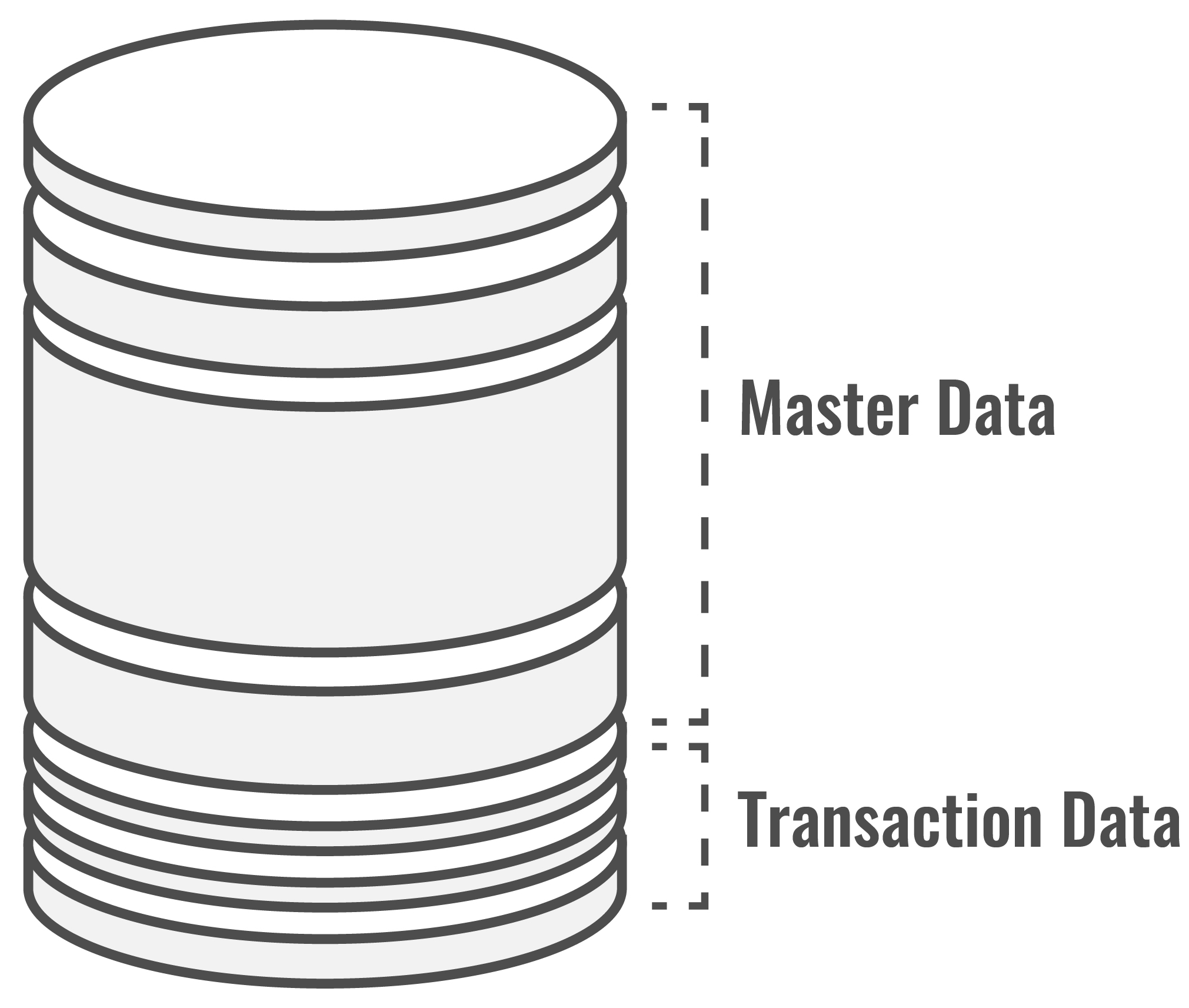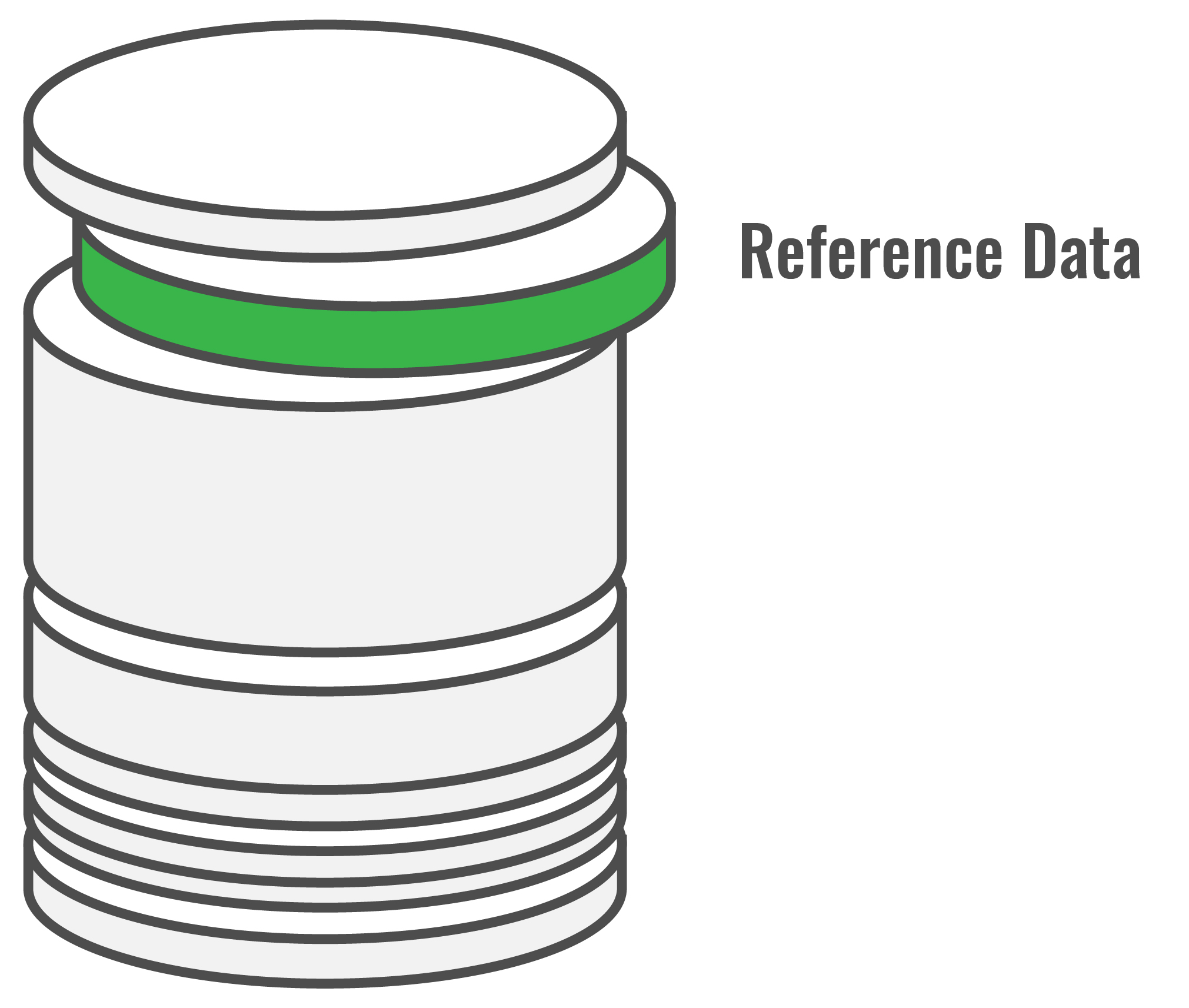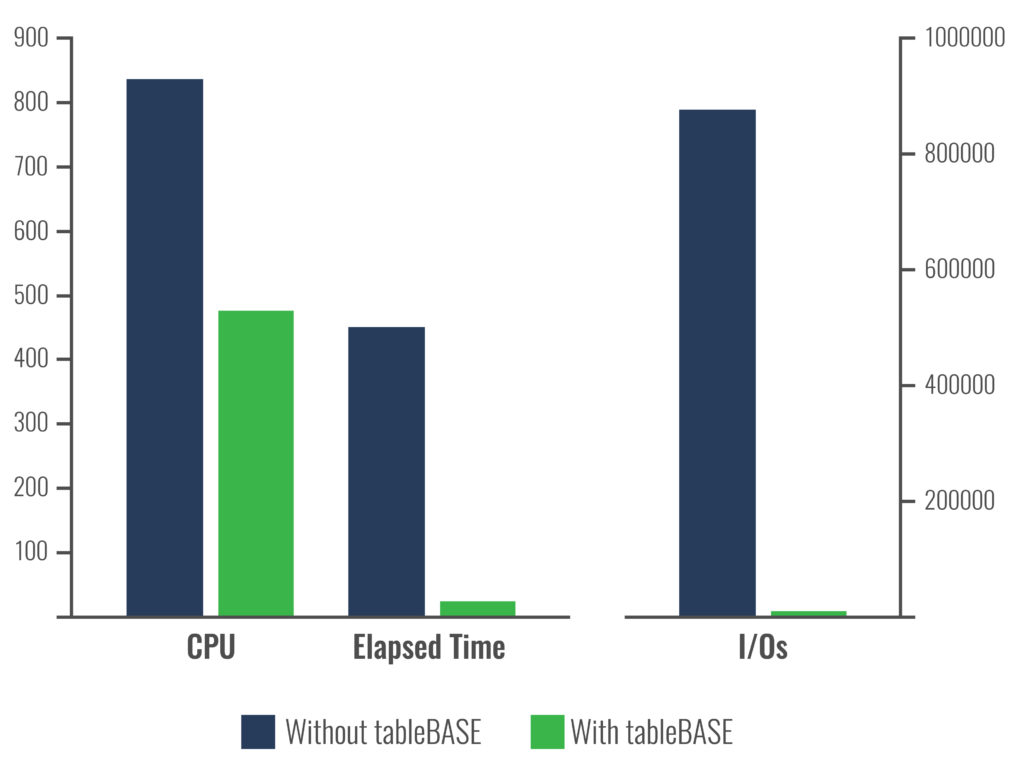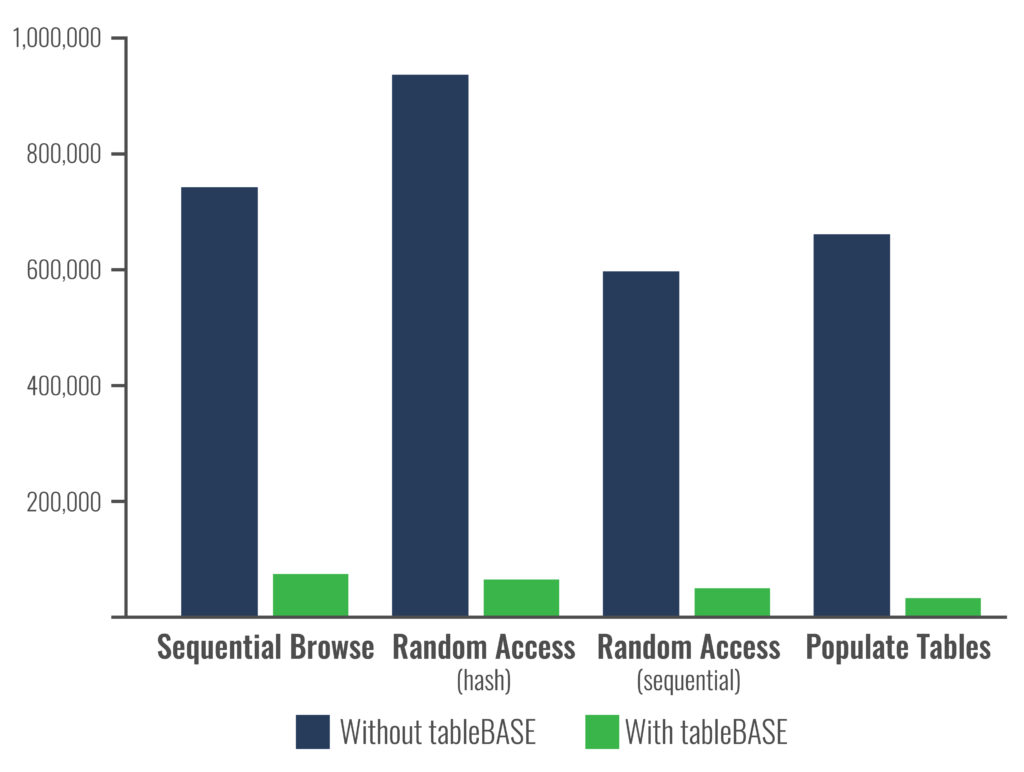Maximizing mainframe performance
Maximizing mainframe system performance is an ongoing process, and amounts to a full-time job both for IT organizations running mainframe systems and for IBM. The z/OS operating system and the venerable Db2 database form the backbone of the most important IT assets possessed by almost all of the biggest banks, financial institutions, insurers, government departments and retailers in the world. These systems are not going anywhere—they are not being replaced, and they are not being phased out. However, they are continually being improved upon. IBM periodically releases new versions of z/OS and DB2 that result in better performance. Most of its biggest customers also invest in best-in-class in-memory technology—tableBASE®—which augments most of the improvements that IBM makes.
Background: The challenges facing legacy systems
Over several decades, businesses have evolved from having predictable and stable data access requirements typically from strictly internal sources, into perpetual-operation enterprises with data access requests coming from businesses, business partners, and customers 24-hours-a-day, 7-days-a-week, and 365-days-a-year.
Originally, data access was internal and well controlled, but over the decades, data started to be accessed first by business partners via modem access or dedicated data lines, and then by customers via the internet, and now by mobile devices. Data access increased dramatically; it was not well controlled, nor was it completely predictable. At the same time, data volume increased dramatically.
Despite the enormous advancement in IT technology and the increased I/O response times now possible, resulting in lightning-fast transaction times, IT systems today still have great difficulty keeping up with the demand to access data. IT organizations are struggling more than ever to deal with the ever-increasing volumes of data that they are required to process.
IT has made advances to help cope with ever-increasing access demand and volume, by implementing data caching, buffering, and more. And, while in many cases this is sufficient, high transaction-throughput environments still have difficulty keeping up. The struggle continues.
Businesses must find and use the fastest way to access data, and to apply those solutions to the data that they access most often.
The 80-20 rule
An organization’s data is critical to the business of the organization, often it is the most valuable part of the organization, and it is used every day by the organization: Banks use their customer account data every second of every day; insurance companies use their policy data for every claim; and retailers use their pricing data every day, in every transaction. But not all data is the same—some data is accessed more often than other data. A general 80/20 rule can be applied to enterprise data: 20% of all data is used most of the time, while 80% of it is used rarely. This is true for most large IT organizations, but for some businesses—typical for banking—as little as 5% of the data results in 80% of all accesses to the organization’s databases. This type of data is known as reference data.
Reference data
What type of data are we talking about? To answer this, we borrow from Malcolm Chisholm’s work, and describe enterprise data using the model (below, left). Almost all of an enterprise’s data can be described as either Master Data or Transaction Data. Master Data is virtually all of the organization’s data that is not directly related to transactions. It includes reference data and structure data. Transaction Data is strictly transaction-related data—data that is related to maintenance and updates to master data, or data about a transaction—it includes temporary data, transaction data and audit data.


The part of the data that accounts for 80% of the accesses to the organization’s database comprises a subset of the master data, Reference Data (see above, right). Reference Data rarely changes, and is accessed most often—examples are codes for account status and account types, customer status and customer types, and bad credit card lists. For organizations with transaction-intensive mainframe environments, reference data is associated with the largest portion of resource usage. They are responsible for 4x more I/O and associated CPU cycles than all other types of data combined. Optimization of this type of data can make a dramatic impact on program run time, general application performance, and can even help reduce mainframe operating costs by reducing I/O and CPU usage.
Optimizing reference data with DataKinetics In-Memory Technology
What is best-in-class data optimization? Unquestionably, it is using tableBASE high-performance in-memory tables to augment DBMSs and their buffering facilities. The reference data that is used most often by the applications—a very small amount of data—is copied from the DBMS into tableBASE high-performance in-memory tables, where it is accessed using a simple API.
tableBASE in-memory table performance
In-memory tables provide the fastest access to reference data; thereby improving the performance of any application that needs to access large amounts of reference data. A product that provides the fastest access to reference data must have the following attributes: Data must be stored in memory, data must be in a table structure (data in rows, able to be searched using keys, indexes), it must be optimized for speed, and must have a short code path.
But what about buffering?
While it is true that buffering can eliminate I/O as well, that is where the comparison stops. Buffering, whether Db2 buffering, VSAM buffering, or any other type of buffering, is not optimized for fast access. Buffering is simply the temporary placement of some data into memory buffers to eliminate I/O—data is still accessed from memory-based buffers as if the data were still on disk. This is actually the biggest advantage to using tableBASE—it is optimized for fast memory-speed access.
The code-path shortcut
In-memory tables are accessed using the shortest possible code path—as close as possible to the calling application. Buffered data uses the same code path that is used for accessing data from disk; tableBASE does not. The image below shows an approximation of the Db2 code path taken for accessing data on disk; the code path taken to access data in memory buffers just eliminates the DASD path.

For comparison, the image below shows the code path used for accessing data using tableBASE.

Note how short the code-path is when using tableBASE to access reference data. All of the Db2 subsystem overhead is avoided—it is not needed for Read-Only reference data access. This code path shortcut is the real difference maker for tableBASE, and is uniquely responsible for making tableBASE the fastest way to get at your reference data.
How fast? Here’s how fast.
Tests and comparisons have been completed by both independent third-party testing organizations, and DataKinetics customer IT organizations.
Test results on customer systems
Using test data from a customer site, you can see how much of an impact tableBASE can make (see below). DataKinetics tableBASE Db2 optimization (using Db2, Db2 buffers augmented by tableBASE) out-performs just Db2 + Db2 buffer optimization by a wide margin: up to 3000% faster.

Test results on third-party systems
DataKinetics testing of buffered Db2 data access as compared to tableBASE data access shows similar results. A benchmark test case was designed and run at IBM’s Poughkeepsie, NY testing facility. The tests were performed by IBM personnel, and to obtain the best possible Db2 results, IBM personnel buffered the entire test Db2 table into memory. The results showed that data could be accessed by tableBASE 30 times faster (3000% faster) than it could be accessed by highly buffered Db2. This is not typical of real-world Db2 usage, but is typical of real-world tableBASE usage. The image below shows the IBM testing— the results are very similar to real customer experiences, shown above.

Conclusions
Businesses have difficulty accessing their data fast enough to satisfy the growing demands on their mainframe systems. In-memory technology can be used to augment the applications and databases of these systems, improving system, application and database performance, while virtually increasing system capacity. The fastest way to access data is from memory, and since only 5% to 20% of data accounts for most of an organization’s data accesses, it makes sense to optimize the data that is accessed most often. DataKinetics tableBASE can be used to help applications access data 3000% faster than is possible using any other technique. It is the solution of choice for in-memory optimization in the mainframe world, and is being used today by 20% of the Fortune 50. tableBASE has never been removed from a system once installed.
For more information, download the tableBASE in-memory technology whitepaper.